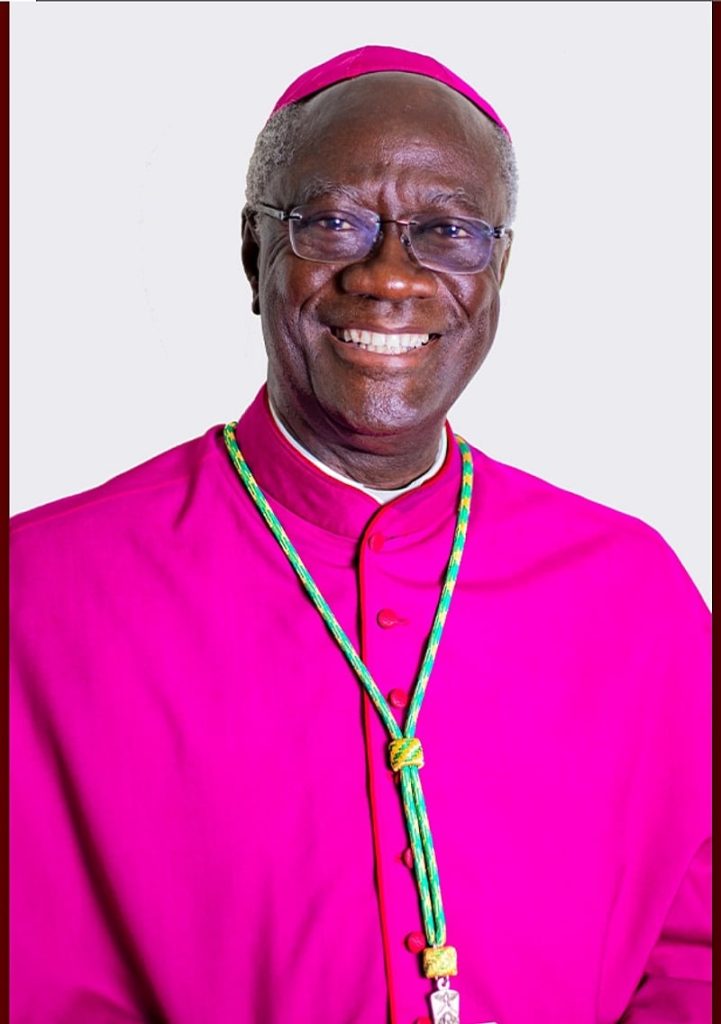Archbishop John Bonaventure Kwofie’s Easter Sunday homily at the Holy Spirit Cathedral in Accra transcended the traditional celebration of Christ’s resurrection. It served as a potent platform to address a pressing national issue: the devastating impact of illegal mining, locally known as “galamsey.” He directly challenged President John Dramani Mahama to honor his campaign pledge to eradicate this environmental menace within his first 120 days in office. The Archbishop’s words resonated with a sense of urgency, emphasizing the gravity of the situation and the dwindling timeframe for action. He underscored the public’s trust in the President’s promise, reminding him that this trust was fragile and that the nation was closely monitoring his progress. The Archbishop’s message was clear: the fight against galamsey was a critical test of the President’s leadership and commitment to the well-being of Ghana.
The Archbishop’s concerns extended beyond the immediate environmental degradation caused by galamsey. He highlighted the broader societal implications, referring to the influx of illegal miners from neighboring West African countries, including Niger, Mali, Burkina Faso, Ivory Coast, Nigeria, Togo, and Guinea, who had reportedly established a presence in Abrewa Nne Nkran. This influx raised concerns about security, resource depletion, and the potential for social unrest. He stressed the need for decisive action to dismantle these illegal operations and restore order within Ghana’s forests. He invoked the image of Nana Bosompem, a figure known for integrity and courage, as the kind of leadership needed to tackle this complex issue without hesitation or compromise. This call for decisive action reflected the Archbishop’s belief that galamsey posed a significant threat to Ghana’s present and future.
While the Archbishop’s message was undeniably pointed and direct in its address of national concerns, it remained firmly rooted in the spiritual significance of Easter. He drew parallels between the resurrection of Christ and the potential for societal renewal and transformation. Just as Christ’s resurrection symbolized triumph over death and the promise of new life, the Archbishop called on Ghanaians to rise from the metaphorical tomb of injustice and wickedness. He urged a collective rejection of negative societal behaviors and a commitment to embracing justice, respect, and faithfulness. This powerful analogy connected the Easter message with the urgent need for change in Ghana, emphasizing the possibility of a brighter future.
He elaborated on the concept of the “empty tomb” as a symbol of new beginnings. Just as Christ’s empty tomb marked the beginning of a new era of hope and redemption, the Archbishop encouraged his congregation to view their own struggles and challenges as opportunities for growth and positive change. He urged them to embrace the transformative power of Easter and to allow the spirit of renewal to permeate their lives. This message of hope and resilience resonated with the Easter theme, emphasizing the possibility of overcoming challenges and embracing a brighter future.
The Archbishop’s homily was not simply a call to action; it was also a reflection on the essence of Easter. He emphasized the unprecedented nature of Christ’s resurrection, a story that had never been told before and one that defied human understanding. He emphasized the power of the resurrection to challenge those who doubted its possibility. This reflection on the core tenets of Christian faith served as a foundation for his broader message of societal transformation. By connecting the extraordinary event of Christ’s resurrection with the current challenges facing Ghana, he highlighted the potential for extraordinary change in the face of seemingly insurmountable obstacles.
The Easter Sunday service at the Holy Spirit Cathedral was a vibrant celebration of faith and renewal. The predominantly white attire of the congregation symbolized victory over death and the promise of new life. The atmosphere was markedly different from the somber reflection of Good Friday. Joyful singing and dancing filled the cathedral, reflecting the celebratory spirit of Easter. Hymns like “Christ the Lord is Risen Today,” “Christ Arose,” “Thine is the Glory,” and “Yesu Adi Nkunim” echoed the themes of resurrection, triumph, and hope. This vibrant celebration of faith provided a powerful backdrop for the Archbishop’s message, reinforcing the themes of hope, renewal, and the possibility of positive change.


